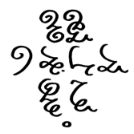All Activity
- Today
-
Expansion of Earlier Work
Luis Hernández replied to Some Guy That writes Music's topic in Orchestral and Large Ensemble
Oh, this is a must-listen. I don't doubt Mahler's influences, which I find so difficult. It is very moving and at times mournful, for example in the opening crescendo between bars 23 and 33. The following progressive entrance of wind and brass instruments is fantastic. The polyphony is superb. And it's phenomenal that the strings give way from measure 54 or so. The transition here between a very consonant atmosphere to a slightly more dissonant one and back is well constructed. Another change at 111, back to nostalgia. With a greater orchestral density, but soft, to go growing. I congratulate you enormously because it seems to me a very careful and effective work. -
Cafebabe started following The 2024 Young Composers Competition: No Entry Fee and Prize Money!
-
The Capital Hearings joined the community
-
Young composers of the U.S. and Canada, The Capital Hearings 2024 Young Composers Competition is LIVE and open for submissions! We are welcoming submission of compositions for mixed, unaccompanied vocal ensemble of 12 to 14 voices. This year, our 10th Annual Young Composers Competition is eager to hear your thoughts on our theme: The Force of Nature. If you feel like you have something to say–or find that something you’ve already written might speak to us–we’d love to hear it! All U.S. & Canadian residents age 18-40 are welcome to submit a 2-5 minute original composition (arranged for mixed, unaccompanied choir) related to this theme, and we especially welcome submissions from unique or underrepresented perspectives – and in unique or underrepresented styles. More information on the theme, guidelines for submissions, and submission instructions can be found at this link: https://www.thecapitalhearings.com/competition/ Submissions are due by June 4, 2024, and a prize of $1,000 will be awarded to the winner.. Please direct any questions to composers@thecapitalhearings.com. _________________________________________________________________
-
Henry Ng Tsz Kiu started following Prelude and Fugue in D minor.
- Yesterday
-
PeterthePapercomPoser started following Sonata No. 1 , Prelude and Fugue in D minor. and Any free music synthesia apps to recommend ?
-
At last, after a languishing period of scant inspiration (though still modest in comparison to previous instances of composer's block I frequently suffered in the past), my creativity has once again blossomed into yet another prelude and fugue. This time, however, I decided to finally put my organ soundbanks to good use, and I cannot deny finding the results even more pleasant to the ear than otherwise relying on my harpsichord soundfont as usual in most of my renderings. The a-posteriori title in German ("Heldenreise") is a reference to the Jungian concept of the "hero's journey", since I apodictically considered the prelude's dotted rhythms to convey a more hesitant demeanour than the fugue, as hinted by the character markings at the beginning of either movement. Enjoy! YouTube video link:
-
Just one that allows one to make unlimited Synthesias for free ( from any of one's music files in MIDI and MusicXlm ) with just the most basic functions. I am trying out piano Vfx and its kinda complicated for me. Synthesia free version only give a short preview of ur piece. Anything free, simple ones to recommend?
-
ashishjain joined the community
-
Cafebabe started following Sonata No. 1
-
Hi! @arpeggia. I really enjoyed this piece too! the chromaticism, dissonance, the use of accents which makes it sound as if the strong and weak beats subverts what is typical of a waltz, yet still stay consistent enough to be easily recognizable as a waltz, which makes it a very interesting and engaging! A lot of drama within a short span of around one and a half minutes. Well Done! I agree with @PeterthePapercomPoser that would be a good extension if you want, a middle, contrasting part to what already is there. Thks for sharing!
-
Hello @arpeggia! I really like this piece! To me, I don't see a problem with the title as I think it really fits the pathos of the piece - I would also describe it as perhaps "demented". I think for a piece with only one main section it still manages to stay interesting and create contrast with changes in dynamics and how you subdivide the beat. If you ever think of extending the piece I think it could work as an ABA form with the B section as maybe a slower and more eerie waltz in another key. I can definitely imagine that. Thanks for sharing this really enjoyable demented dance!
- Last week
-
Wow! This is much better! This exemplifies perfectly very expressive use of chromatic neighbor tones and beautiful suspensions. Even without looking at the score I could immediately hear an improvement in the emotional impact of the music (at least to me). Very well done! It has a somewhat tragic pathos to it - near the end it really rises to a kind of screaming misery that is very affecting! Thanks for sharing!
-
PeterthePapercomPoser started following Vals Horrible and Expansion of Earlier Work
-
I agree on both counts. It does seem like 6/8 is a better fit. And, overall, it does seem to me that there are a lot of things that don't seem to come up again. That doesn't go very much with the style of the work. One thing I think you have to watch out for is the textural changes. Suddenly there are two-voice chords, suddenly there are 4 or 5.... You can do all that but I think it requires some kind of preparation.
-
Why do you call him “horrible”? It doesn't sound like that to me. It is chromatic but tonal and seems quite coherent to me.
-
Legend of Bete Grise (Grade 2 Concert Band)
Alex Weidmann replied to JordanRoberts's topic in Orchestral and Large Ensemble
Hi Jordan. I enjoyed your use of percussion in this piece at key moments, to drive the narrative forwards. The main theme was catchy, and suited the storyline well. I think the blended orchestration was nice, where you have octave doubling. One thing I would suggest is putting your master score in concert pitch, so it's easier to see the harmonies at play. -
Expansion of Earlier Work
Some Guy That writes Music posted a topic in Orchestral and Large Ensemble
Hey guys, a couple weeks ago I posted a study called "luscious" for string orchestra. Today I have it here as an expanded piece. The beginning is nearly the same, expect with an accelerando in the A'' section, so that when the A'' section appears at the end, it has more impact. There are many pieces of advice taken from others, importantly modulation. frankly, these are not fabulous examples of the modulation you have been asking for, as they don't don't happen on the climaxes of melodies, which does not come to me naturally. I'm working on another exercise which will hopefully do that in a convincing manner, however this was more of a brain itch than an effort to improve. -
SedaRay joined the community
-
I wrote this back in June 2012 while playing around with dissonant and chromatic tones. This was one of the few pieces that had a dedicated title (I called it "horrible" at the time and just stuck with it). I largely forgot about this until early this year, when I revisited my list of unfinished compositions and discovered that I had already finished this one. I went ahead and revised it (the original was completely unplayable and I had to tone it down, with some refinements of course), and decided to share it with you guys. I hope you enjoy it!
-
Here's another scherzo for y'all's - Brahms Scherzo in Eb minor Op. 4:
-
Vitor Demantova changed their profile photo
-
Vitor Demantova joined the community
-
"Septet" - Guitar, clarinet, flugelhorn etc.....2'30"
MJFOBOE replied to Quinn's topic in Chamber Music
I am watching a Film Noir (in my mind) with a perfect soundtrack accompaniment. I enjoyed the work very much ... loved the style and intent with a great mix of instruments/orchestration and rhythmic tension. Mark -
Firstly, the audio rendering is superb and the orchestration engaging. You created a wonderful musical space to sit in and be. As for the which composers influence you ... I personally hear the late romantics as they move into the 20th century. Yes, a bit of Mahler towards the climax of the work as well as others in that specific time reference. Mark
-
Exercise in Orchestration: Content
MJFOBOE replied to Some Guy That writes Music's topic in Orchestral and Large Ensemble
Wonderful woodwind (horn) ensemble writing ... quite delightful/playful in texture and feel with a nice dialogue among the players. However, it is a teaser ... a bit more would be most satisfying. Mark -
Lurking for Symphonic Orchestra
MJFOBOE replied to Some Guy That writes Music's topic in Orchestral and Large Ensemble
The rendering in the beginning of the audio is somewhat muddled. The balance among the strings and woodwinds is not distinct/clear. So I found it somewhat difficult to appreciate your attempt here. Maybe more dynamic markings etc. would help. There are lots of lovely melodic heroic themes and the audio/rendering is clearer as your orchestration thins out. Mark -
Lurking for Symphonic Orchestra
chopin replied to Some Guy That writes Music's topic in Orchestral and Large Ensemble
Yes! Thank you! -
arnoldarutyunyan joined the community
-
Lurking for Symphonic Orchestra
chopin replied to Some Guy That writes Music's topic in Orchestral and Large Ensemble
This is a beautiful piece @Some Guy That writes Music. I'm talking about key changing in my next video, and would like to demonstrate a portion of this (your modulation from C to Abmajor. The way you modulate this, in my opinion, does work. However you can still tell that the key change is abrupt. And it appears this was your intention. If I demonstrate this I will put a positive spin on it because I actually do like the abrupt key change in this context. But I also feel this is a great way to demonstrate these types of key changes. Let me know! -
Palette - For Large Ensemble and Gospel Choir (2024)
MJFOBOE replied to Symphonic's topic in Orchestral and Large Ensemble
Hi, it was a bit of a challenge to categorize your style/work: impressionist - minimalist; however, I agree with the above insight as pointillist. I wonder what was your idea/purpose in integrating the choral work? By the way the orchestra has a wonderful texture/color. Mark -
Olof Darin changed their profile photo
-
.thumb.png.8b5b433a341551e913a34392660bc95b.png)
Favorite Musical Book Quotes?
PeterthePapercomPoser replied to PeterthePapercomPoser's topic in Composers' Headquarters
I've been reading Kent Kennan's Counterpoint book. But besides that I decided to re-read "The Music Lesson - A Spritual Search for Growth through Music" by Victor L. Wooten. Victor Wooten is hailed as "the Carlos Castaneda of music." Here are a few fragments from the beginning of the book: If you've gotten this far, thanks for reading! -
We seriously can learn a lot about how dynamics can create something so expressive after listening to this. I really like how a solo cello sounds, and this is a good example of how instrumentation can be used to create a specific mood. In this case, a mood of restlessness or unease. I'm not sure how you managed to get this clarinet to sound so expressive, but it must have taken a bit of tweaking. I love your motive, using the triplets to create a fun and playful rhythm (but in a dark sense)
- 1 reply
-
- 1
-


.thumb.jpg.a1bd070fa88caa1c83527ffe77c97a41.jpg)



